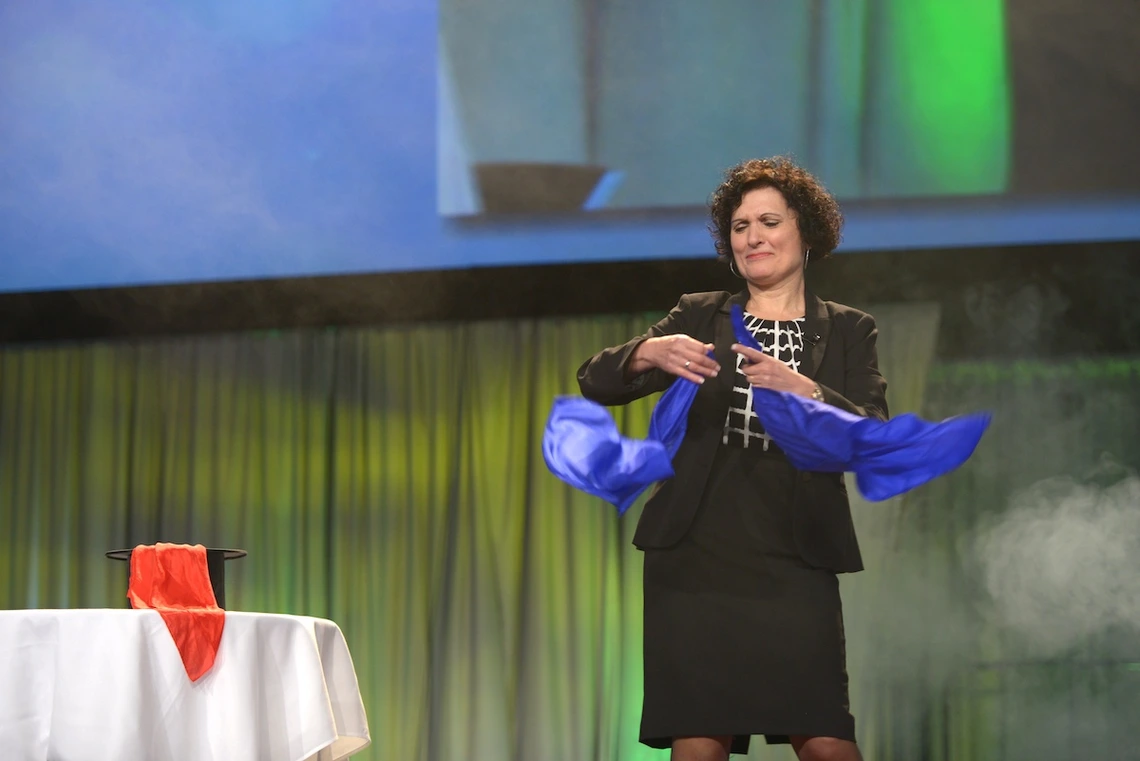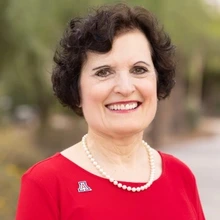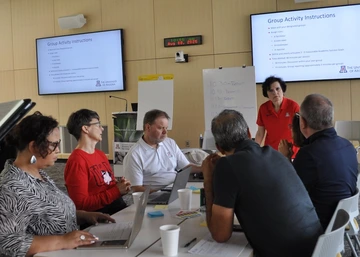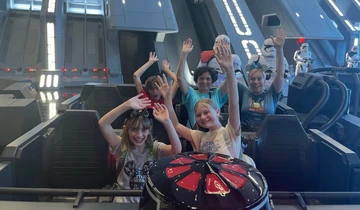Q&A: Provost Patricia Prelock shares what 'success for every student' means to her

Prelock performs a magic trick at the 2013 American Speech-Language-Hearing Association Convention in Chicago. She says she loves the delight and wonder that magic can bring.
Patricia (Patty) Prelock has spent much of her first few months as provost and chief academic officer listening. As part of her series of Campus Conversations, she's meeting with faculty, staff, students and community members to hear their perspectives on the university's strategic imperative that lies at the heart of her new role: success for every student.

Patricia Prelock
For Prelock, student success is a shared responsibility – one that begins with listening and continues through open dialogue and taking opportunities to offer her insights and experiences.
Prelock – affectionately known as "Gigi" by her grandchildren – reflects on the experiences that guide her leadership, her thoughts on addressing the university's challenges and supporting student success, and why you might just bump into her at your next theme park visit.
As a highly accomplished scientist and scholar in clinical speech-language pathology, you bring a wide range of experience as a faculty member, researcher, clinician and administrator. How do those experiences shape your approach to student success?
I came from an institution in Vermont where I was a faculty member, a mentor for undergraduate, graduate and doctoral students, a researcher and a clinician. And I think that's a huge advantage. And because I was teaching and had doctoral students, even as an administrator, faculty felt comfortable talking with me about what they were going through as educators and researchers.
I don't let my administrative work guide my thinking about what I do. My focus will always be intentional moves to drive opportunities that help students and faculty reach their full potential.

In her June 12 report to ABOR, Provost Patricia Prelock (right) emphasized efforts to cultivate a sense of student belonging, improve retention and support student success.
Molly Condit
You have called listening one of your superpowers. How has that shaped your work?
The ability to listen derived from my work with children with autism. From those who were functionally nonverbal to those who were highly intellectually engaged, they taught me how to listen in different ways, to think differently and to understand that somebody might have a different perspective than my own.
They taught me to always assume competence in an individual. My neurodiverse students would also say, "You're helping us be able to navigate in a neurotypical world, but why aren't you adjusting the way you engage with me to manage my neurodiverse world?" Point well taken. I believe my work with autistic individuals has transformed my ability to be a much better thinker, learner and listener.
What does "success for every student" mean to you, and what does it look like for the University of Arizona?
To me, success for every student means each student who comes to the U of A has a positive experience, they progress in their degree and graduate. They have a career that makes them happy, and have as little debt as possible when they graduate.
This is a large university with over 56,000 students. We are re-evaluating how our different structural and support areas like Enrollment Management, Student Affairs, advising, tutoring and career development work together to create a seamless process for our students, from the time they are being recruited through admission, orientation, and then throughout college, graduation and as Wildcats for Life.
Let me give you an example. I'm hearing from students that they want professional advising from the time they start here. I would also love to see professional advisors who are trained across colleges so that it's easier for students who change majors and move in and out of colleges. Having well-trained professional advisors is part of our larger strategy to improve retention and graduation rates.
I'm also very excited about some early plans with community colleges across the state. In fact, I met with the provost at Pima Community College, and we're going to expand and streamline transfer pathways that are simple and clear for students.

Provost Patricia Prelock leads a group activity at the Council of Deans meeting on Aug. 8. Prelock says open dialogue with administrators and faculty is a key component of student success.
Can you talk a little bit about the disruptors facing higher education now and how you're addressing those challenges?
This has been a challenging couple of years. We just got out of COVID, we are navigating the impact of actions at a federal level, and some corners of our society are questioning the value of higher education. I'd like to do a better job of talking about our impact and letting the community know how the U of A is improving their lives, whether they live in Tucson, a rural area or one of our tribal communities.
The enrollment cliff brought on by lower birthrates is also a challenge. With fewer 18-year-olds, institutions across the country are using innovative approaches to recruit students. However, I think the cliff here is much different than in the Northeast. The 18-year-old birth rate is much lower in the Northeast than other parts of the United States, and with so many universities, colleges, private schools and Ivy League schools in that part of the country, competition is stiff. Here, although there are concerns about numbers of students going to school, we can access students from many of our surrounding states where there are greater numbers of students. We can expand our recruitment and capitalize on our distinctiveness in student success, research and community engagement.

Provost Prelock enjoys the "Star Wars: Rise of the Resistance" attraction at Disney World with her daughter-in-law and grandchildren. Prelock is a self-described "roller coaster fanatic."
What hobbies do you have that might surprise people?
I'm an amateur magician, and I love the delight that magic brings to those who appreciate the pure wonder of "What just happened?" I use magic in the classroom to engage students around themes they are learning. There is also a neuroscience element to magic with "sleight of hand" and perspective-taking. I often share these concepts with my students. For the autistic children I work with, I like to share simple tricks and give them the banter that goes along with it – it becomes a way for them to engage socially. And, I'm a roller coaster fanatic. My grandchildren and I love going on roller coasters together. And they often say, "Gigi, come on, one more time!" My favorite roller coaster is one of the oldest and longest roller coasters called "The Beast," a wooden roller coaster at Kings Island in Ohio.

